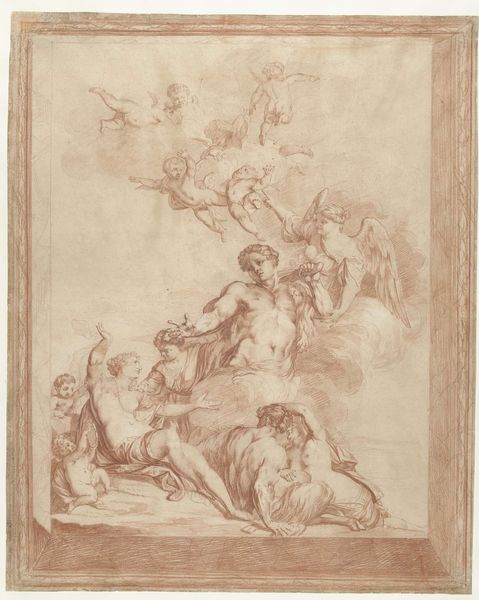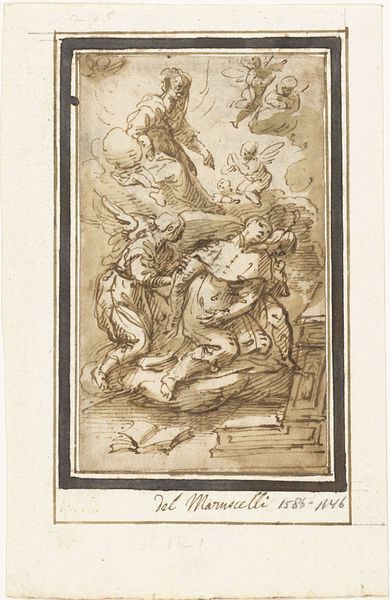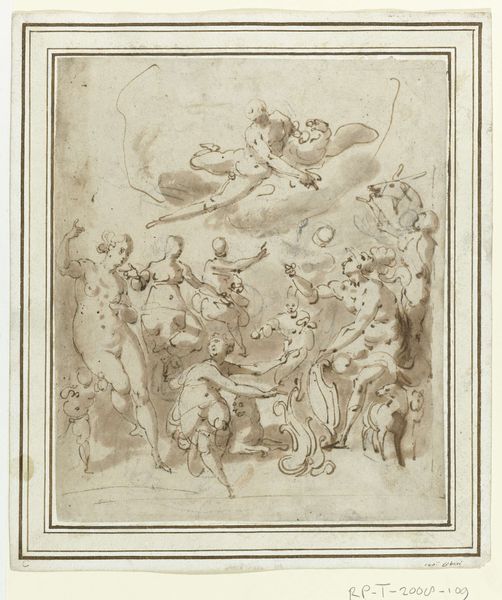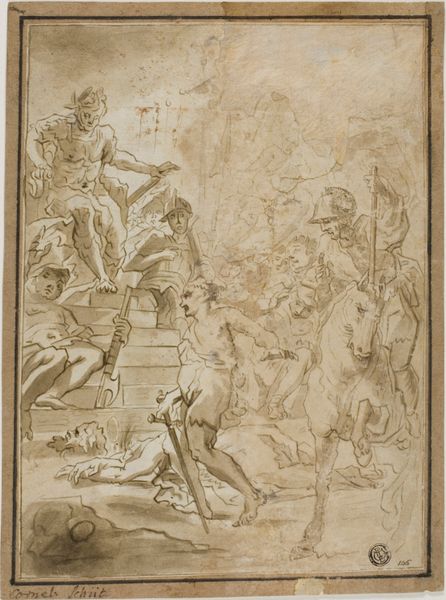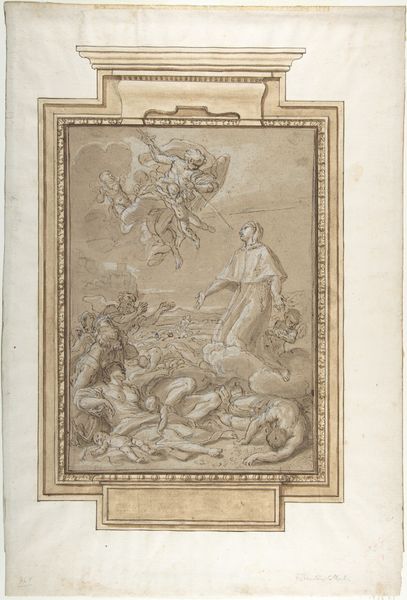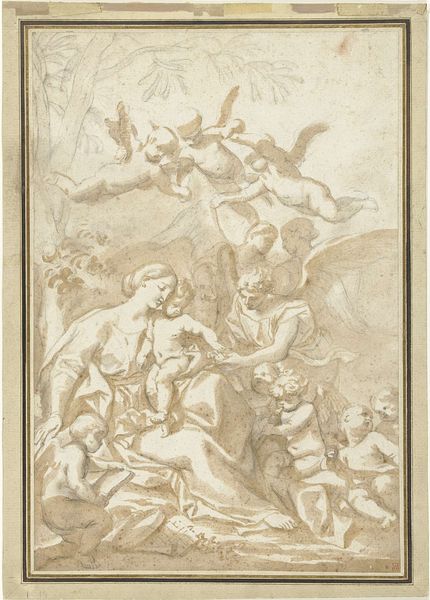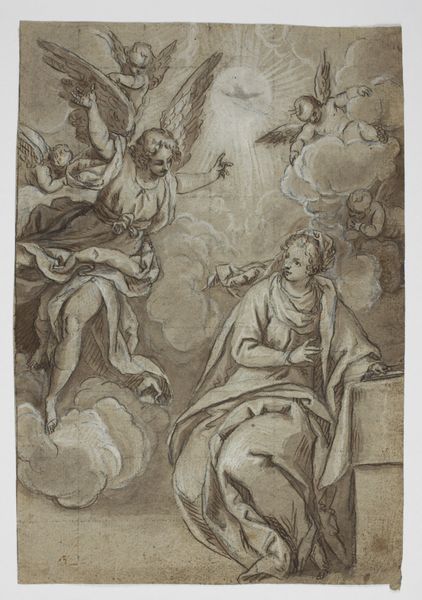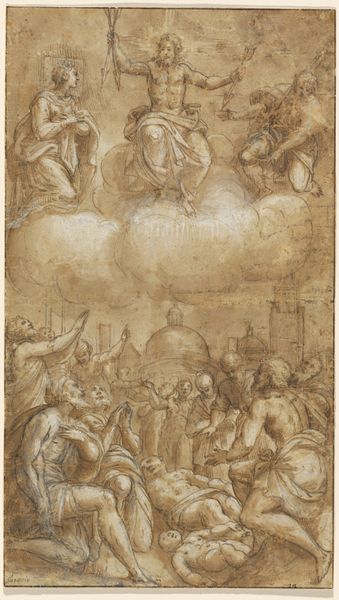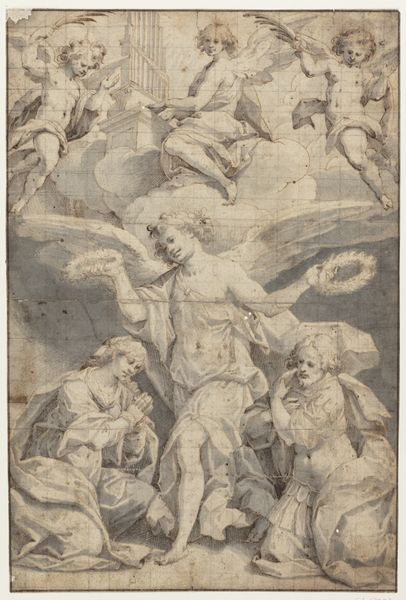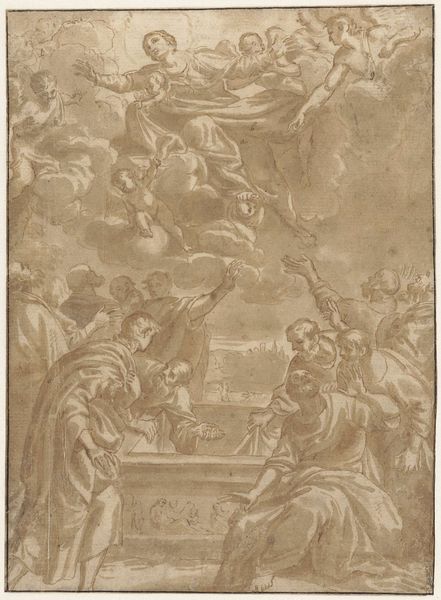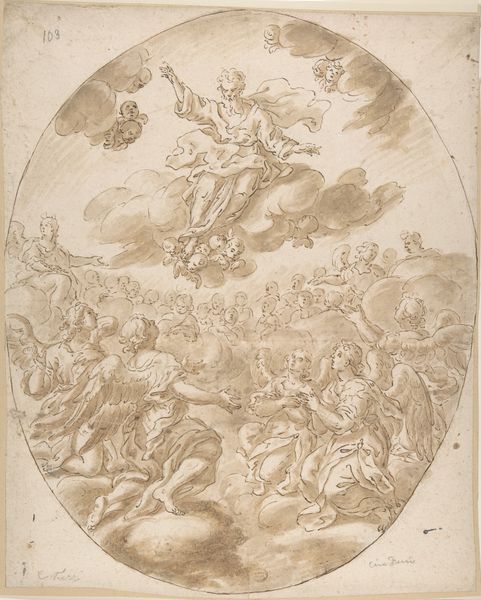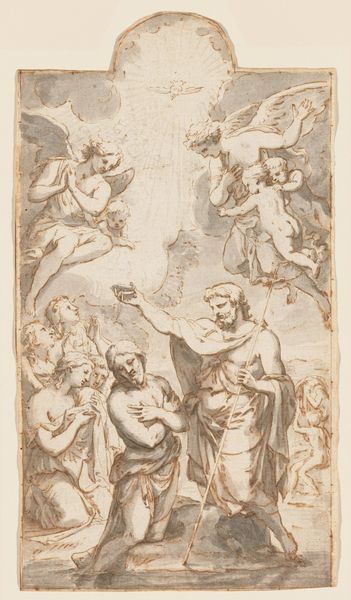
drawing, print, paper, ink, chalk
#
drawing
#
allegory
#
narrative-art
#
baroque
# print
#
charcoal drawing
#
figuration
#
paper
#
charcoal art
#
oil painting
#
ink
#
chalk
#
history-painting
#
italian-renaissance
#
italy
Dimensions: 171 × 108 mm
Copyright: Public Domain
Curator: Lazzaro Baldi's "Study for the Annunciation," now at the Art Institute of Chicago, offers us a glimpse into the visual language of Baroque religious art. Editor: Immediately striking is the dynamism. Despite being a preparatory study rendered in ink and chalk, the figures possess this ethereal weightlessness as if perpetually caught in the divine moment. Curator: Absolutely, Baldi's treatment echoes the Counter-Reformation's emphasis on spectacle to reaffirm faith. We observe God the Father amidst a host of angels overlooking the Virgin Mary receiving the angel Gabriel's message. Editor: Look closer and notice how Baldi uses light. A ray seems to penetrate the scene, originating from above. It bathes Mary, suggesting divine grace illuminating her acceptance of God's will. And notice the squaring, the underlying grid; what does this grid reveal to us? Curator: That grid gives this artwork's function away; a method that was crucial for transferring the composition to a larger canvas, potentially for a grand altarpiece, revealing the practical mechanics behind creating such religiously charged imagery. These underdrawings and gridlines allowed Baldi and his workshop to translate sketches into monumental paintings or frescoes, shaping religious experiences in public spaces. Editor: Yes, the composition draws your eye upwards, doesn't it? From Mary, to Gabriel, through the heavenly host toward God—a masterful arrangement employing dramatic diagonals to heighten spiritual impact. Notice the difference of textures and the clear effort for each of these textures. Curator: And, let’s not forget that art during this era, especially within the context of the Catholic Church, served a didactic purpose. It wasn’t merely aesthetic, it was instrumental in conveying theological narratives to a largely illiterate population. The piece subtly reinforces notions of obedience and divine intervention so key to Baroque religious doctrine. Editor: This small sketch packs immense artistic force. We begin to see this as a dynamic and spiritually evocative construction despite its modest scale. Curator: Indeed, by examining such preliminary works, we uncover how artistic practices were deeply intertwined with social expectations of devotion and spiritual communication.
Comments
No comments
Be the first to comment and join the conversation on the ultimate creative platform.
